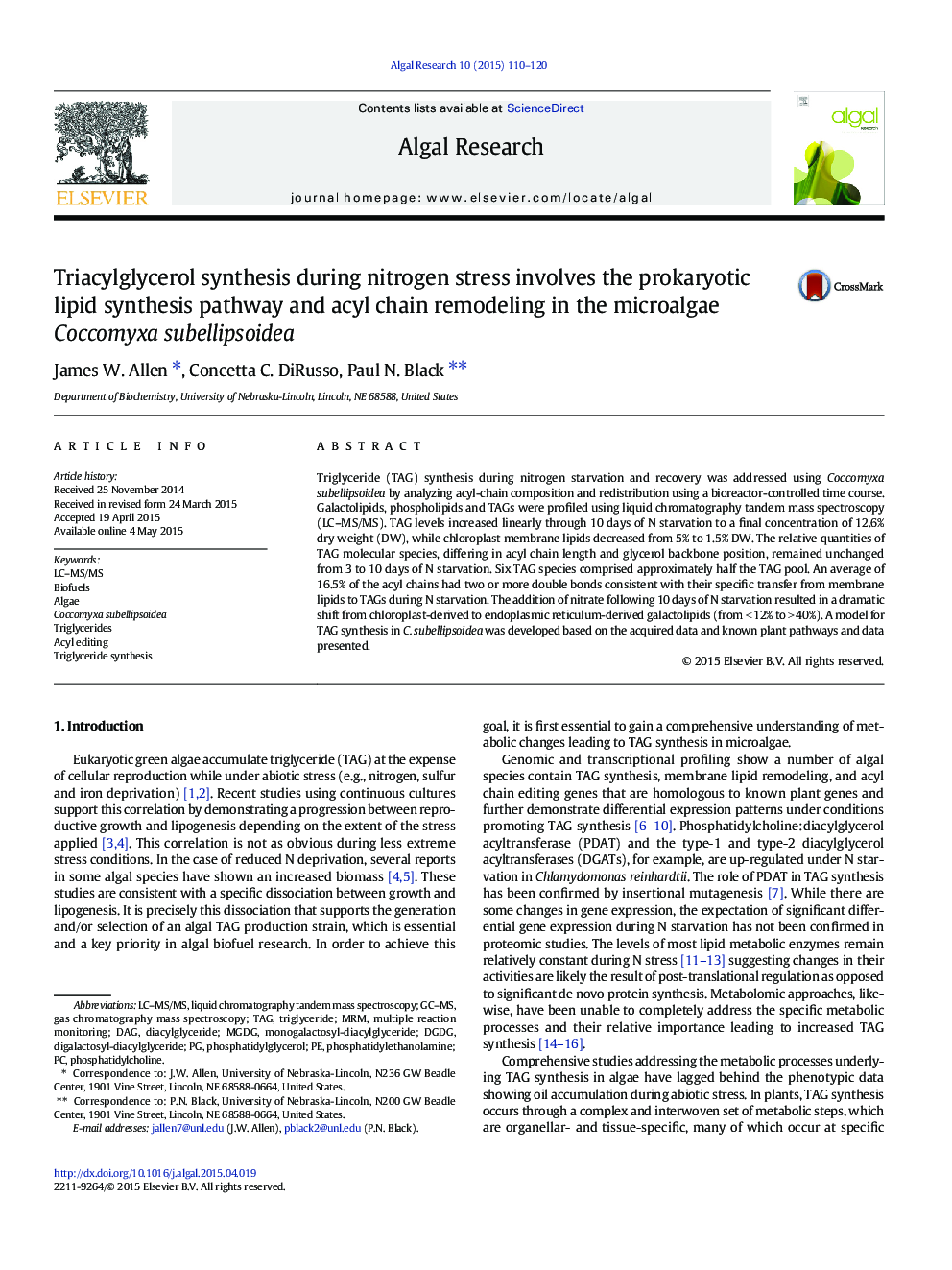| Article ID | Journal | Published Year | Pages | File Type |
|---|---|---|---|---|
| 1742033 | Algal Research | 2015 | 11 Pages |
•Seven lipid classes were analyzed over a time course of N starvation and re-addition in Coccomyxa subellipsoidea.•During N starvation, acyl chains in the triglycerides are derived from acyl editing and de novo fatty acid biosynthesis.•Membrane lipid acyl groups are continually transferred to the TAG pool during N starvation.•Upon re-addition of N, the acyl chains in the TAG reservoir serve as substrates for immediate galactolipid synthesis.
Triglyceride (TAG) synthesis during nitrogen starvation and recovery was addressed using Coccomyxa subellipsoidea by analyzing acyl-chain composition and redistribution using a bioreactor-controlled time course. Galactolipids, phospholipids and TAGs were profiled using liquid chromatography tandem mass spectroscopy (LC–MS/MS). TAG levels increased linearly through 10 days of N starvation to a final concentration of 12.6% dry weight (DW), while chloroplast membrane lipids decreased from 5% to 1.5% DW. The relative quantities of TAG molecular species, differing in acyl chain length and glycerol backbone position, remained unchanged from 3 to 10 days of N starvation. Six TAG species comprised approximately half the TAG pool. An average of 16.5% of the acyl chains had two or more double bonds consistent with their specific transfer from membrane lipids to TAGs during N starvation. The addition of nitrate following 10 days of N starvation resulted in a dramatic shift from chloroplast-derived to endoplasmic reticulum-derived galactolipids (from < 12% to > 40%). A model for TAG synthesis in C. subellipsoidea was developed based on the acquired data and known plant pathways and data presented.
